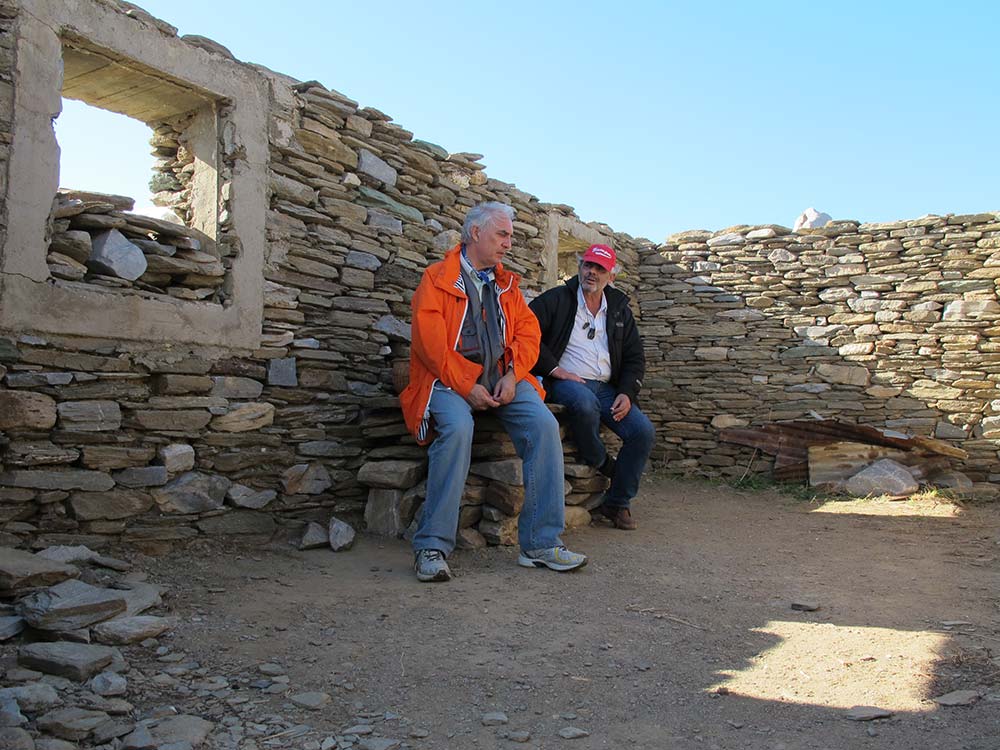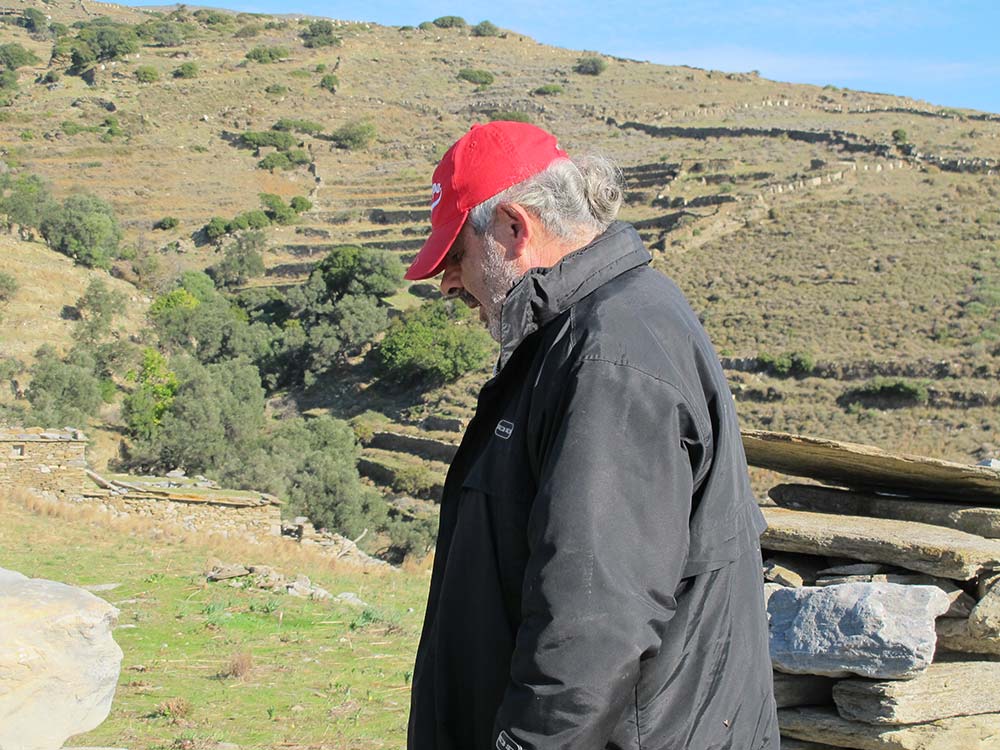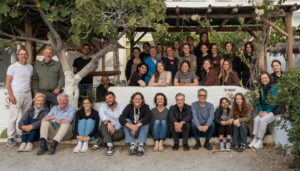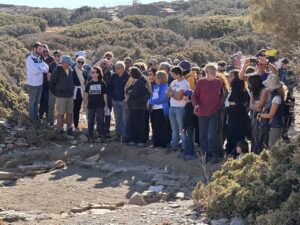
He has spent time at Zagora on Monday, Tuesday and Wednesday 12-14 November 2012.
He is looking broadly at anything of a geological nature that may have affected life at Zagora during the time of the settlement, around 900 – 700 BCE, and also for possible clues as to why the settlement was abandoned.
In particular, he is looking for evidence of Early Iron Age production (the Early Iron Age covers from about 1050 to 500 BCE).
Slag (the remains of the iron smithing processes) was found in the original excavations of the 1960s and 70s and and has also been found in the surface surveys we have conducted in the last few weeks. However it requires further scientific analysis to determine what the slag from Zagora suggests.
Dr Bassiakos walked extensively about the Zagora plateau and also quite a distance in as many directions as were accessible to walking around the site. This, as you will have seen from the photographs on this website, involves extremely steep slopes.
He uses magnifying eyepieces to investigate rock and stone more closely. If any items require further investigation, he will collect them and subject them to scientific analysis in a laboratory.
He commented on the wall of our dig hut at Zagora that it had examples of all the kinds of rock found around the site, including marble and schist, and also with iron visible in some of the rocks.

He is also pursuing a line of enquiry about whether the nature of the rocks below ground – alternating layers of marble and schist – may have had an influence on water retention and been a source of water for the settlement.
Certainly, water – then as now – was essential for life. Finding out what the source of water was, and whether its depletion caused the abandonment of Zagora is one of the mysteries we are trying to solve.
Dr Yannis Bassiakos and his expertise in geology may just help to solve this mystery.


